It’s now officially Spring and Croydon’s parks and tree-lined streets have been adorned with beautiful blossoms for a couple of weeks now. Why not catch a glimpse by taking a stroll around the town centre’s green spaces, following guest writer Peter Hall’s Green Line walk part 3.
Green spaces in Central Croydon: East Croydon to Church Street
I believe that the tram line is one of Croydon’s greatest assets. The green logo and livery is so appropriate for a route which connects the town centre to many beautiful natural environments and makes nature accessible to all in our borough. I have been travelling the length of the line for several years, with my camera at my side. This article shares a green walk in the central area of Croydon where the four branches of the tram share the same tracks. It seems like the least promising part of the line, but you will be surprised. This walk, which is less than 2.5 miles long, includes three green spaces, each one offering a unique and interesting experience. The walk is entirely on hard paths and pavements, so ideal for a wet day – boots not required!
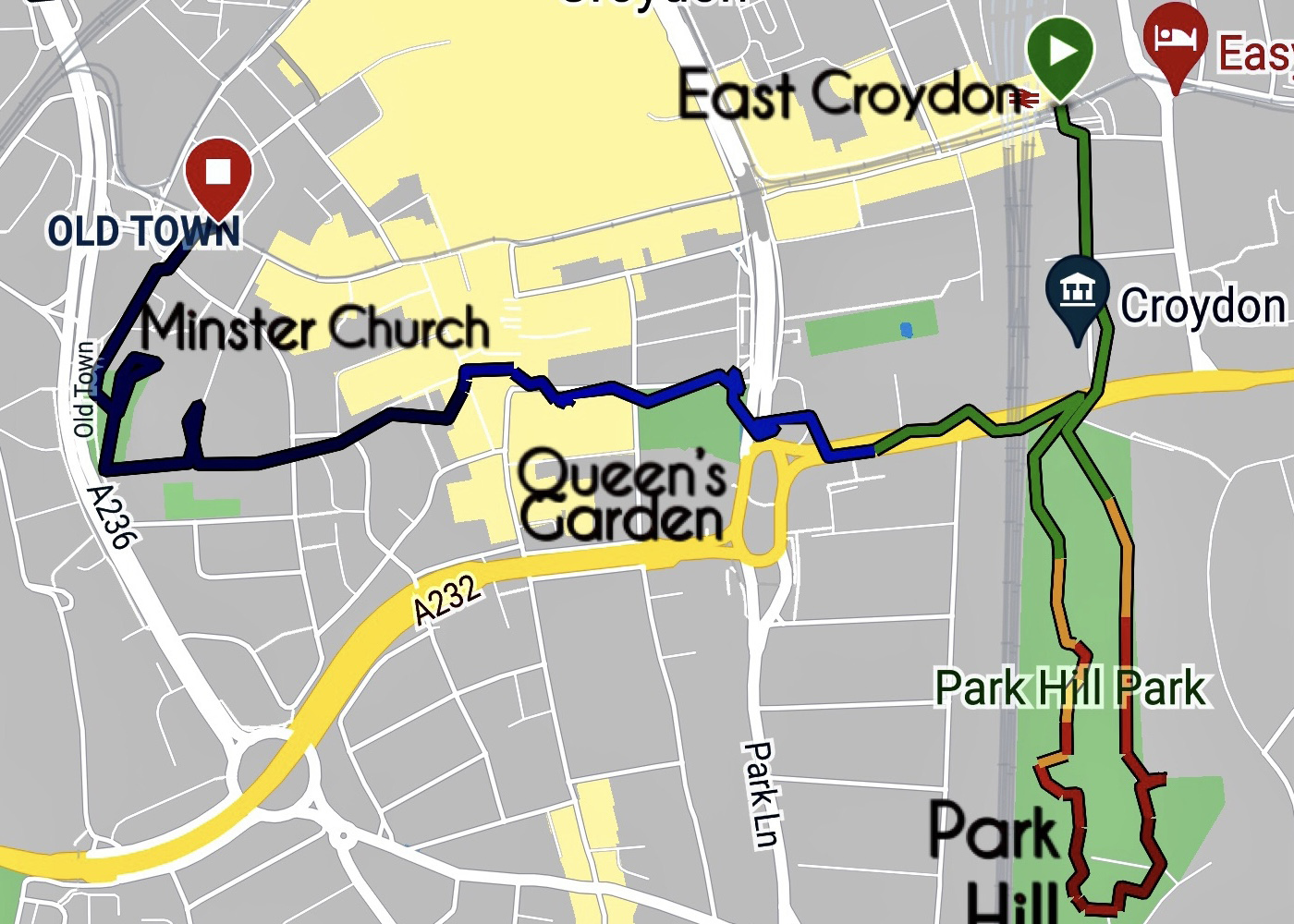
The walk starts at the hub of tram, bus and rail – East Croydon station – so should be accessible to all – but not brilliant for parking! From the railway forecourt / tram platform to eastern destinations use the tram-crossing to cross the tram lines, and then the road-crossing to cross the main road (George Street), turn left and first right to walk down Altyre Road. In just 400 yards you come to a main road (the A232) with a crossing on your right. Cross over to the entrance to Park Hill – our first green space. The park entrance is at the junction with Fairfield Path, a reminder that this area was once the location of a field set aside for entertainment from visiting fairs.
The park is long, but not very wide. There are two footpaths; take the left hand route, which initially proceeds through an avenue of cherry trees. These trees form a vibrant canopy of pink, when they are in bloom. You will walk through an avenue of brilliant pinks and white, petals drifting slowly to the ground. The photos here, of the trees in bloom were taken on 25 March 2021. The bloom is like this for about a week, so make a note to visit in the last week of March and hopefully you will be lucky. There were many others celebrating the show with their camera phones and numerous selfies with pink backgrounds appeared on social media, so look out for it!
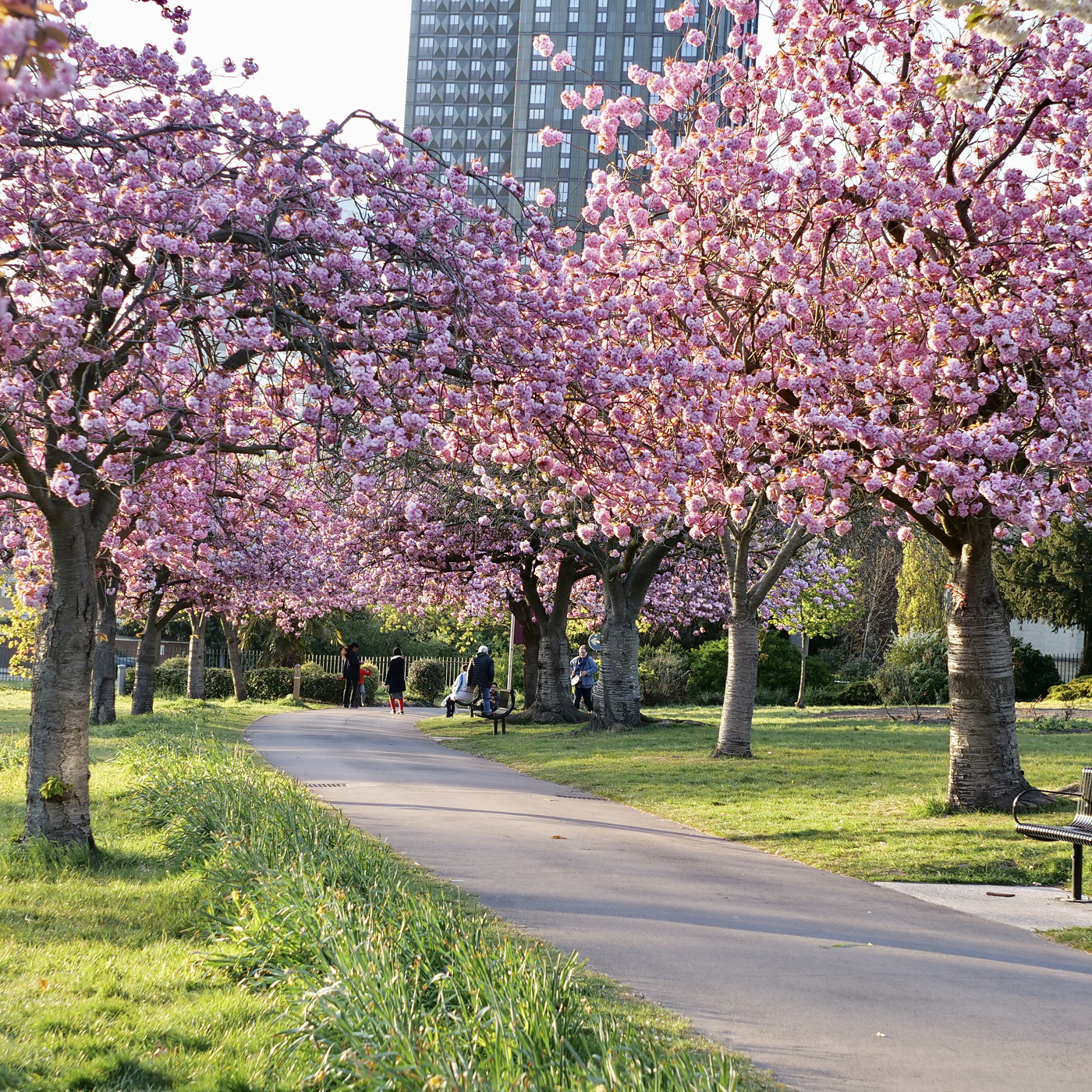
The path goes slightly uphill, winding around tennis and netball courts. It offers regular wooden seats for those who want to rest and absorb the beauty of lawn and ornamental trees. It is a brilliant place for a lunchtime break from the office. The park was once part of a deer park, whose origins go back to Saxon times when the land was owned by the Archbishops of Canterbury. Try and imagine a herd of deer, roaming freely in this once wooded space, occasionally hunted by the clergy and lords of the manor on horseback. We will discover more about the Archbishops as we proceed on this walk.
Towards the Southern end of the path the climb gets steeper. On the left you will see a tall brick tower and behind that a noticeable mound of earth. These structures are evidence of the need to provide clean water to the growing metropolis of Croydon in Victorian times. The mound hides an enormous underground reservoir, which was built in 1851 and was a gigantic bell shape, thirty feet deep, built of brick to hold almost one million gallons of water. It proved to be inadequate, and so it was supplemented by a water tower In 1867 to boost capacity and pressure. Even that, quickly proved to be inadequate. The underground reservoir was filled in and the tower fell into disrepair. At the time of writing the upper part of the tower is surrounded by scaffolding for remedial repairs. I have found a very old sketch (below left) of what appears to be a public open day for the Victorian brick reservoir which rests buried under the very visible dome shaped mound next to the tower.
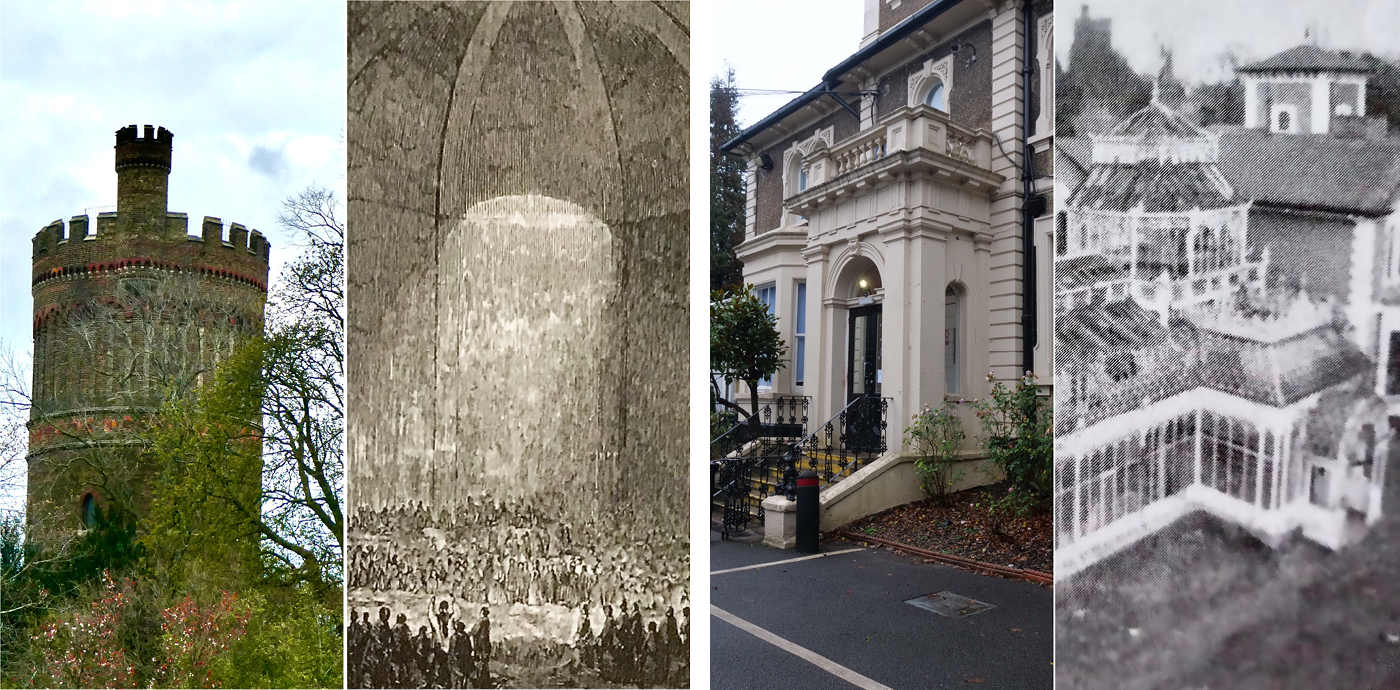
Walk past the mound and follow the path to the right, then keep left and you will enter what appears to be a completely different part of the park. A steeply sloping area of deciduous and coniferous trees and ornamental shrubs. On a hot summer’s day, this is a refreshingly cool glade offering leafy shade with acrobatic squirrels providing entertainment. This land was actually bought by the wealthy tea merchant, Frederick Horniman in 1850 – he who also built a famous South London museum of the same name. The steep downhill ground is known as Coombe Cliff, and here he created a botanical collection which was a mini version of Kew Gardens and the Crystal Palace. The glass house was later relocated to the Horniman Museum, but we can all enjoy the wooded oasis which he bequeathed us. I have found an old photo (courtesy of Jeanne Lewis – above right) of the house and glass house – a magnificent Victorian structure. While you are here, take a peep at his grand house, with its blue memorial plaque.
As you leave this garden and return to the main park, the path takes you back to a café. A wooden fence on the left separates you from the Coombe Cliff gardens where the glass house once stood. Peeping between the timbers, you can see the hard stand of that once magnificent glass house. The café sells drinks and ice creams in the summer. Whether you visit In winter or summer, you will encounter a family of super-friendly squirrels whose natural instincts have been corrupted by the generosity of café customers.
Continuing back towards Croydon, you will pass a walled garden on your left. This is a charming community run facility. Visit the area in the corner by the railway line. This is a section of the garden dedicated to a heroine of Croydon, Cicely Mary Barker. She was a gifted artist, born and educated in Croydon, and despite fighting lifelong disability she created a unique style of water colours depicting mythical fairies and elves as well as religious paintings donated to local churches. The street art on the outer wall of the garden commemorates her art. I think it speaks volumes that the people of Croydon have celebrated her life.
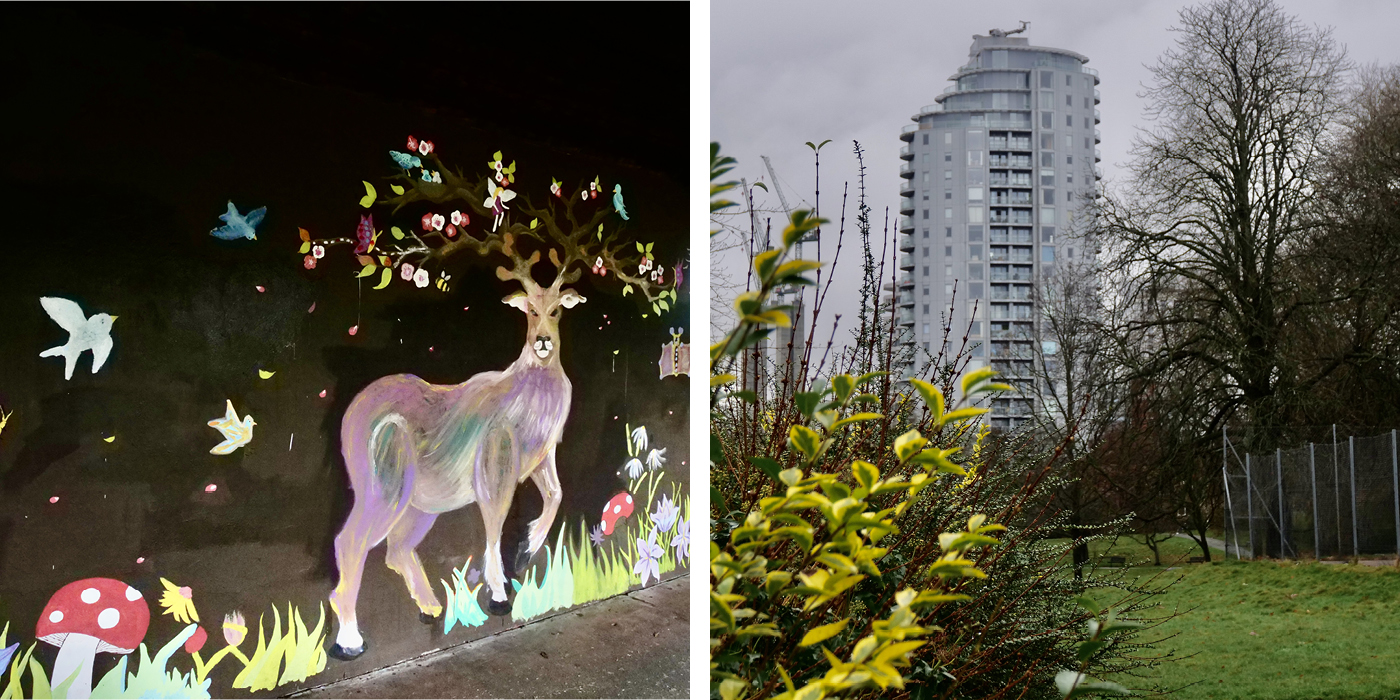
Leaving the park via this path, you will be struck by the juxtaposition of mature trees, winding pathways and a rapidly developing city centre of tower blocks – built and under construction – which are its backdrop. We are very lucky to have this green space so close to our town centre.
You will leave by the same gate which you entered. Turn left down the main road, and cross the road at the pedestrian crossing marked to Wandle Park. Continue down the opposite side of the main road, until you reach the major junction, with the Fairfield Halls on your right. There is both a pedestrian crossing and an underpass available to you. The underpass (closed at the time of writing) takes you into our next green space, known as Queen’s Gardens. From the surface crossing, you can also enter the gardens.
The gardens are some twenty feet below street level – which is part of its charm. They end, somewhat abruptly, at the old Town Hall. As with Park Hill, we are fortunate to have this green space in the centre of Croydon. Its origin is the spur railway line from East Croydon to a station known as Croydon Central. The railway line proved to be uneconomical, was abandoned and the station was turned into ornamental gardens for the Town Hall complex. The whole area has been completely redeveloped in the last three years, with new housing and a complete makeover – and some shrinking – of the sunken park. At the time of writing, this park is close to reopening, so this article may be its first review. I think you have to be impressed with the ingenuity of the designers who have tried to fit, into a small area, some of the original atmosphere of the formal Victorian Garden with areas for children – both young and old. They have done this by creating sweeping paths and stairways and by separating the areas of the garden into different levels. They have retained the original mature trees – ingeniously building a climbing feature underneath one of them. However, the decision to paint child friendly areas in various shades of bright yellow is something which only a building contractor who is used to black and yellow stripes on lorries and scaffolding would have dreamt up. My photo shows a totally confused wood pigeon surveying the scene. I hope this can be repainted to lawn-green or woodland-brown one day. You must visit this, and decide for yourself. Is it just too ambitious, trying to offer too much in too small a space? I think a lot will depend on how well we look after this space and respect the different needs of other visitors. If you read this article, and visit the new gardens, tell me what you think of it in the comments below.
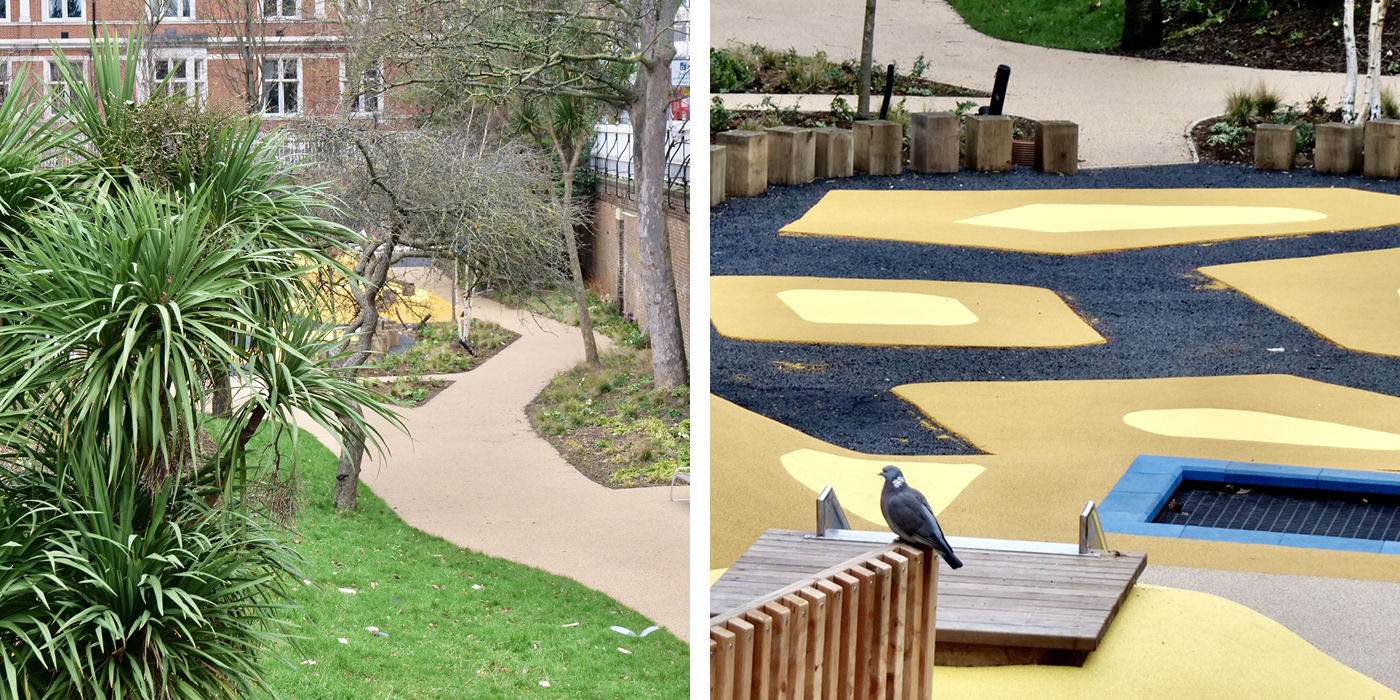
We now proceed to the last and oldest of the green spaces. Leave the gardens, walking down Katherine Street, beside the old town hall. At the bottom of the road, turn right and on your left, look for the old Victorian arcade built into an impressive shopping frontage. Walk through and then descend down a wrought iron staircase to Surrey Street – often full of the hubbub of the Street Market. Turn left, and very soon, on your right, you will see an alleyway downhill called Matthews Yard. Very prominent on your left is a Victorian relic which looks a bit like a castle. It was in fact the steam driven pumping station which pumped the water up to the reservoir and tower which we saw in Park Hill. At the time of writing, the whole area is being redeveloped and the pumping station is looking a bit neglected and fenced in. I am hoping they will make something of this impressive and historic building one day.
Walk on to a road junction. On your right, is the concrete tower of Ryland House – which some might describe as ugly, unless you’re a fan of brutalism. Continue until you reach the T junction with Church Road. Turn left and then immediately right down Howley Road.
As you walk down, you will see on your right, Old Palace Road. It is worth the detour of 100 yards to see (through the railings) the Tudor buildings of what was once the Archbishops Palace and the Great Hall – now part of Old Palace School.
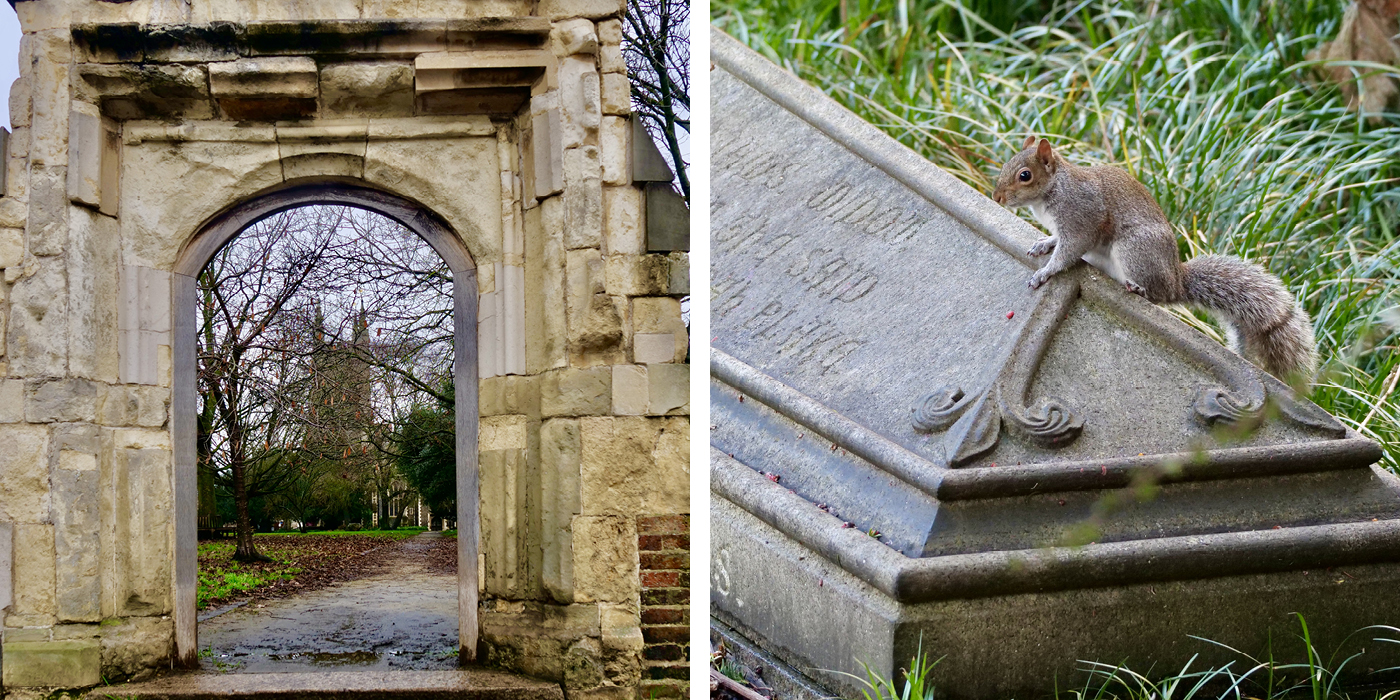
At the end of Howley Road, a stone archway on the right leads to a green area – known as the St John’s Memorial Gardens and on to the Minster Church. This is the smallest of the green spaces on our walk, but historically the most interesting. It is bounded on the right by the Tudor Brick wall of the Archbishops Palace. The Palace has existed since the 13th century. You will see the darker bricks of the “St Peter’s Cross Keys to Heaven” built into the wall. There is also a bricked-in archway, once wide enough for a carriage. At the end of this park, the well-weathered Saxon South Entrance of the church is at the end of the pathway. There are many gravestones and tombs surrounding the church. These have become the playground of squirrels, who hop with ease over memorials to the dead. Familiarity with humans has made them reasonably friendly and easy to film.
The walk is almost over. Walk past the main entrance door of the church. The church is often open and is well worth a look. It is at its most magnificent when bathed in the morning sun when the shafts of light stream in through the high windows.
Walk on through the Minster car park to Church Street. You will find the Coffee Time café immediately in front of you, and the Cafe Montego a short distance up Church Street. Between them is the Church Street tram stop. Walk another 50 yards beyond Montego and turn left down Frith Street, and you can enjoy traditional Pie and Mash at Cockneys of Croydon. Trams go one way down the street, some continue westwards to Wimbledon, while all the others turn right and go back to East Croydon where you started this walk.
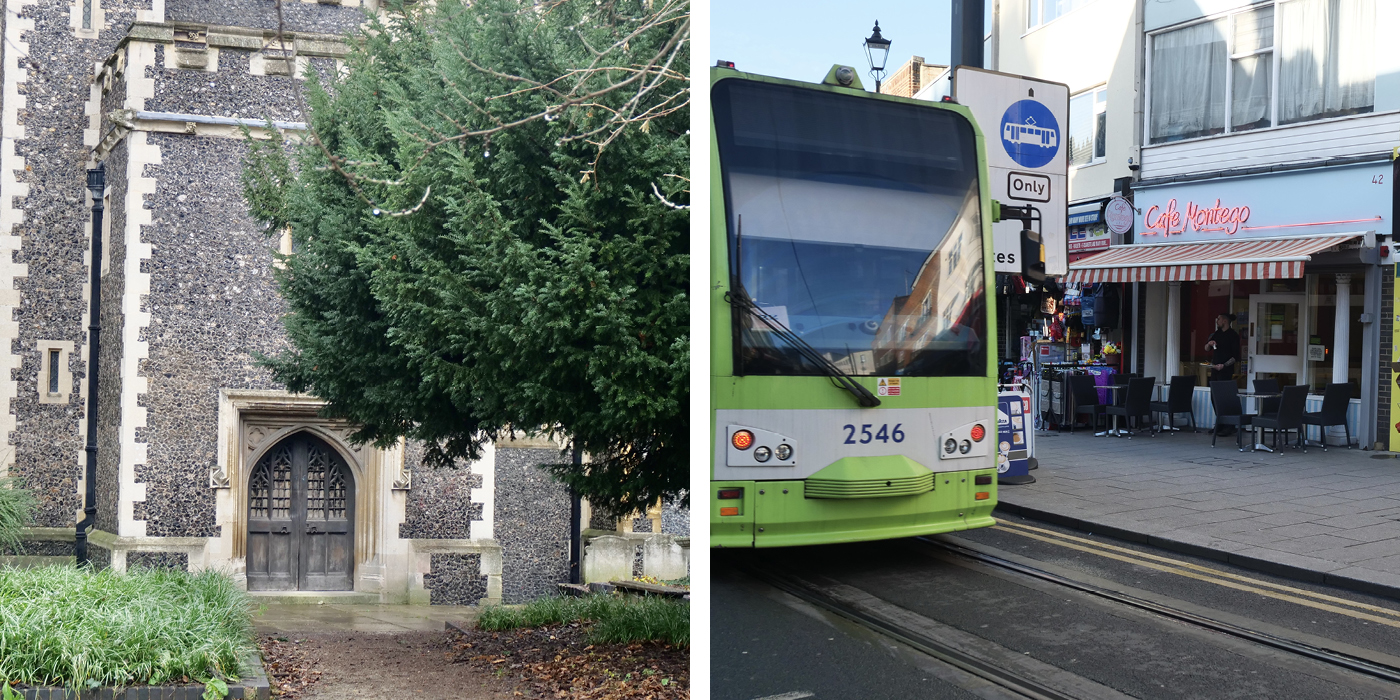
Posted by guest writer Peter Hall (all photos courtesy of Peter).
If you missed The Green Line Part 1, you can read it here.
If you missed The Green Line Part 2, you can read it here.
Peter lives, works, walks, and often runs in Croydon – always with his camera – visiting green spaces and places with an interesting history. He is a keen Instagrammer who loves to give and receive comments on his peter_at_croydon account.
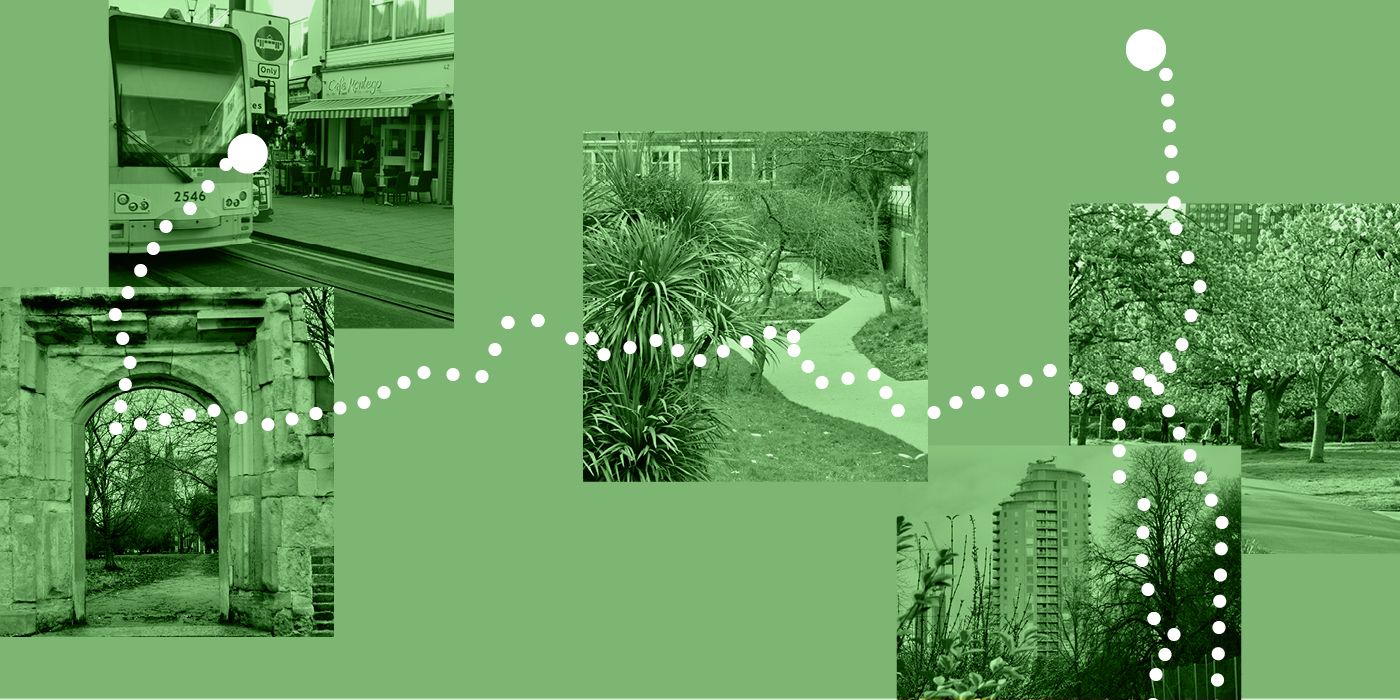

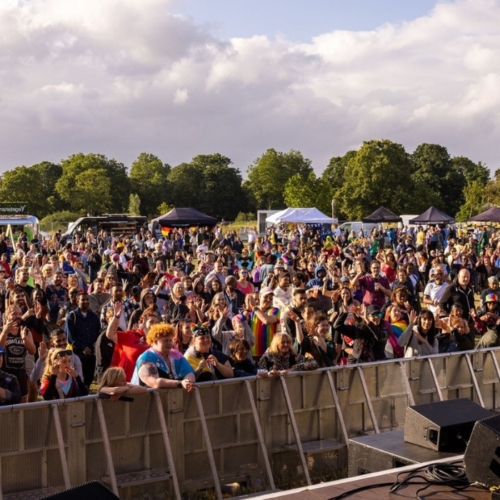
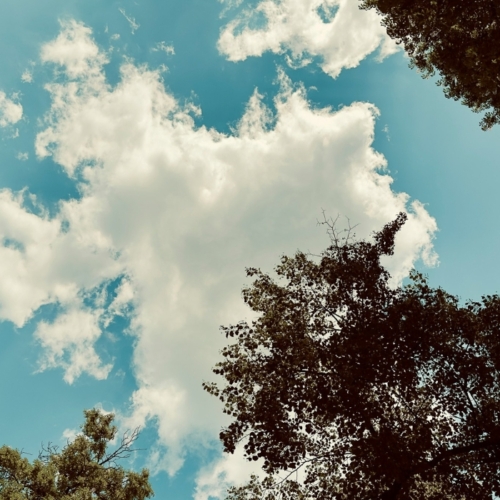

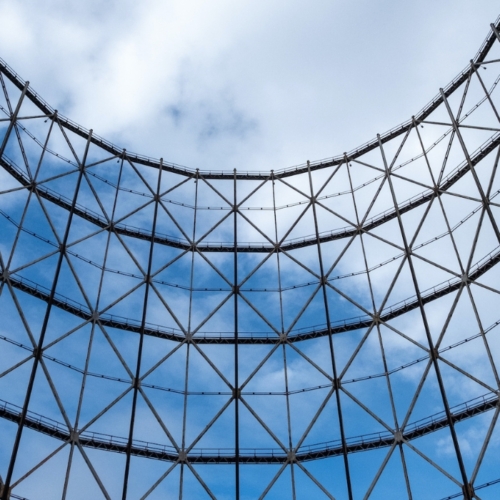
No Comments